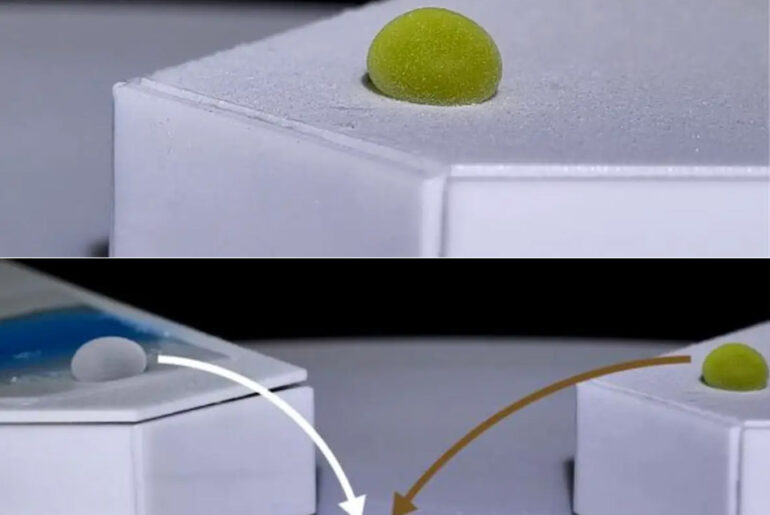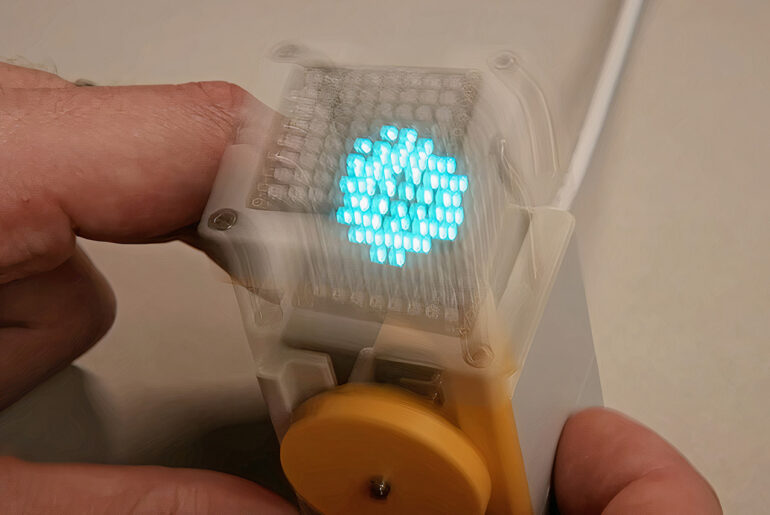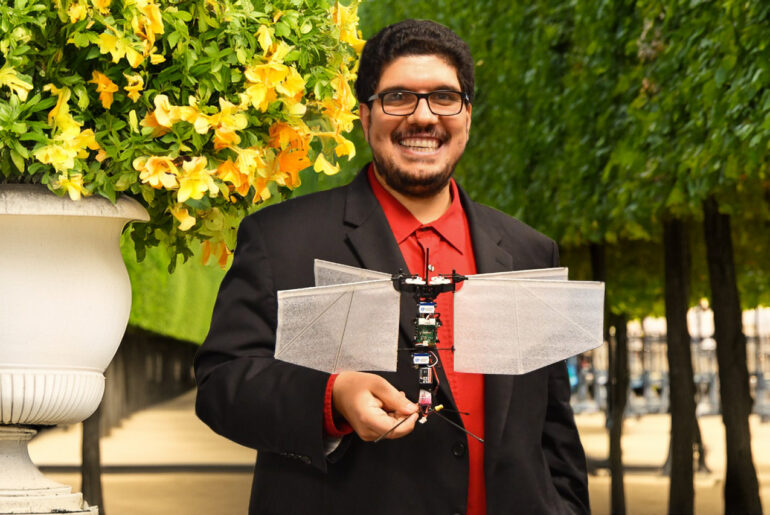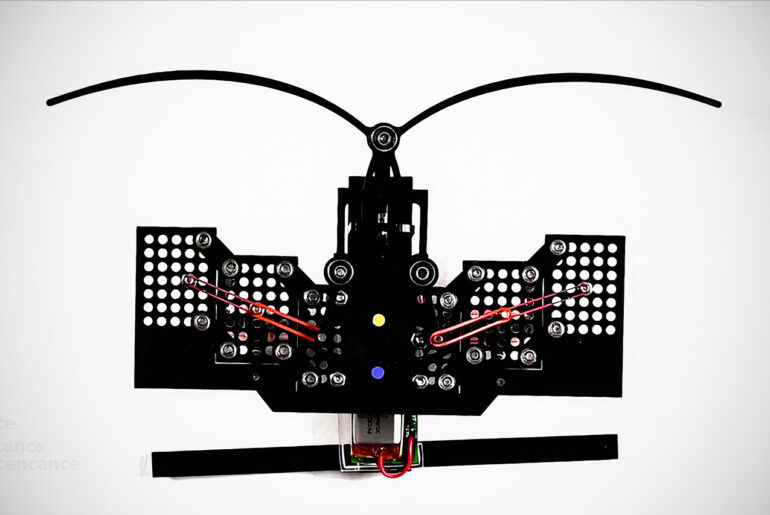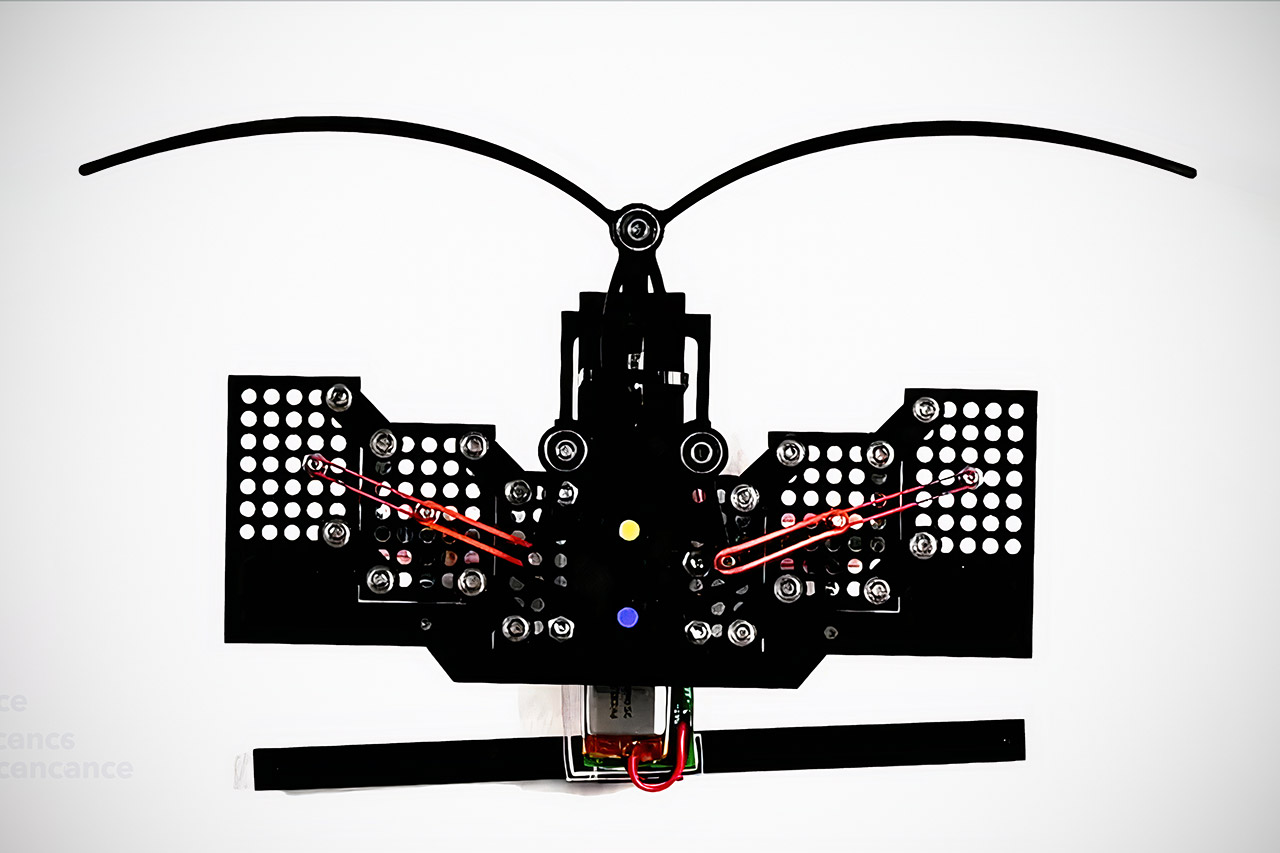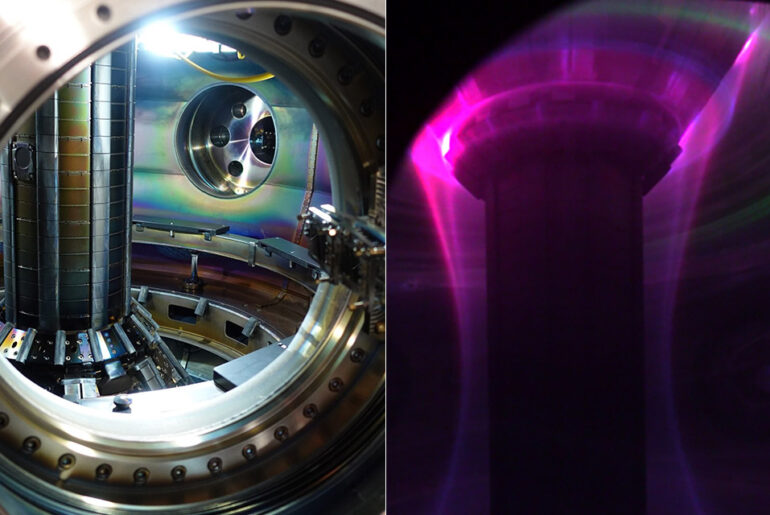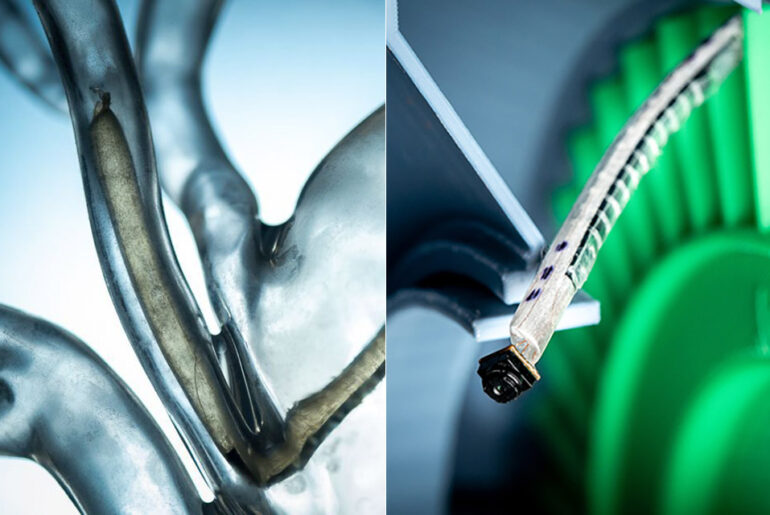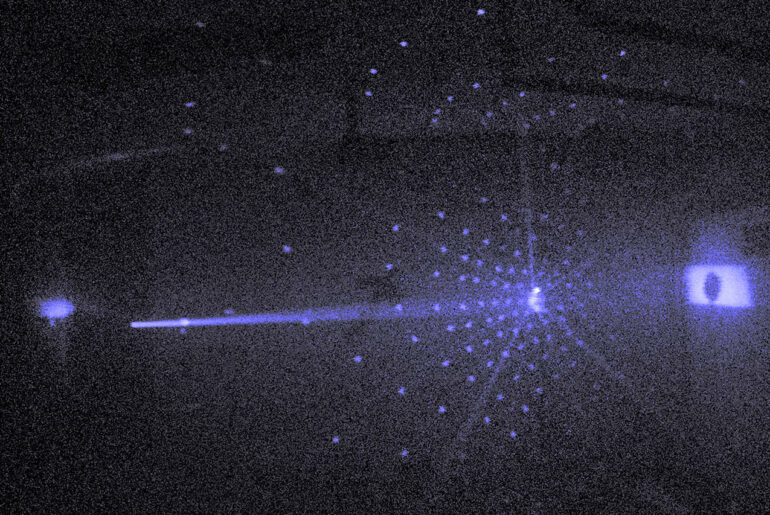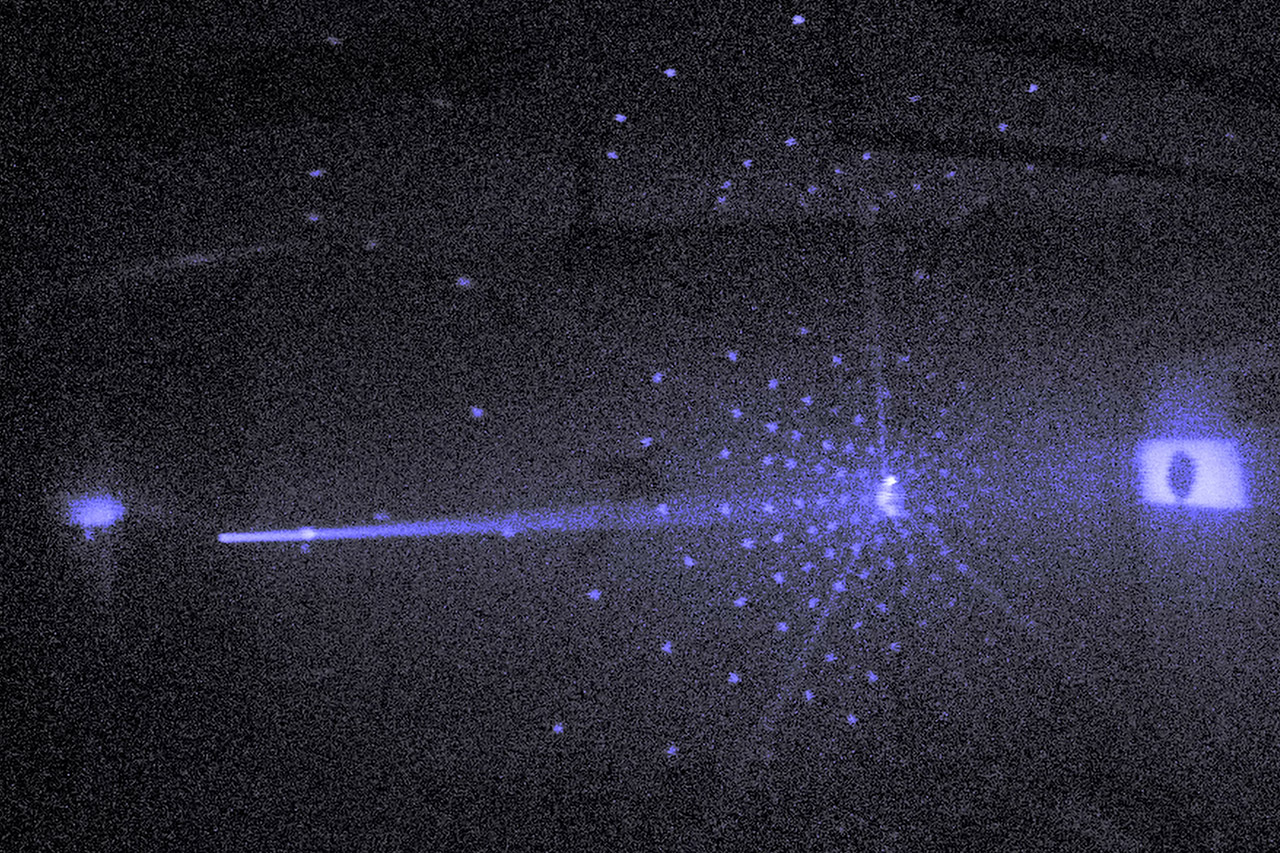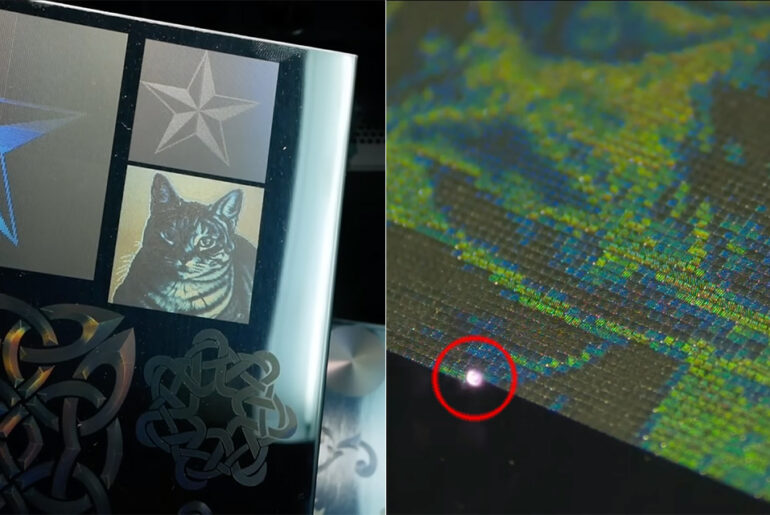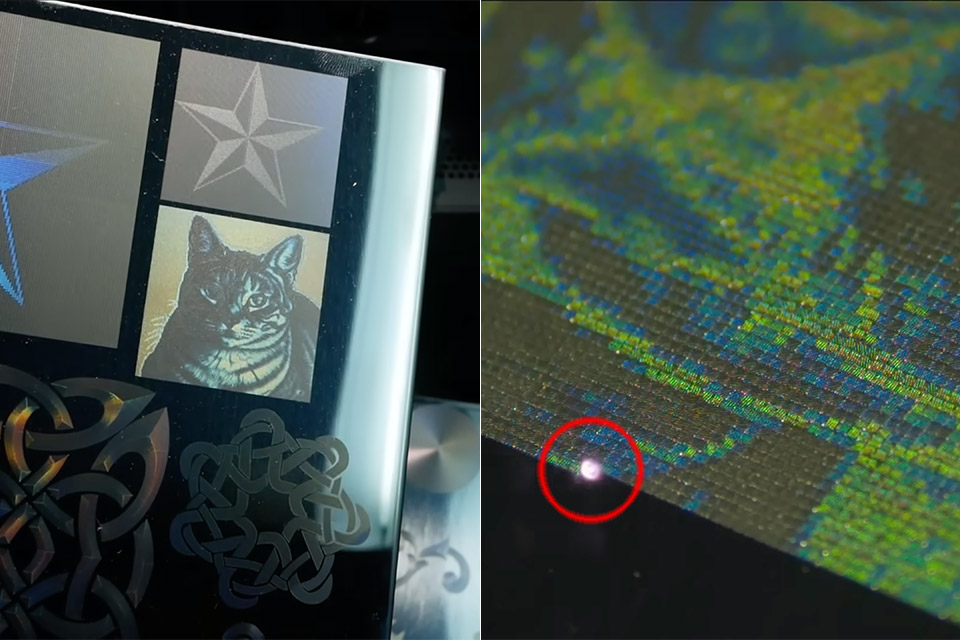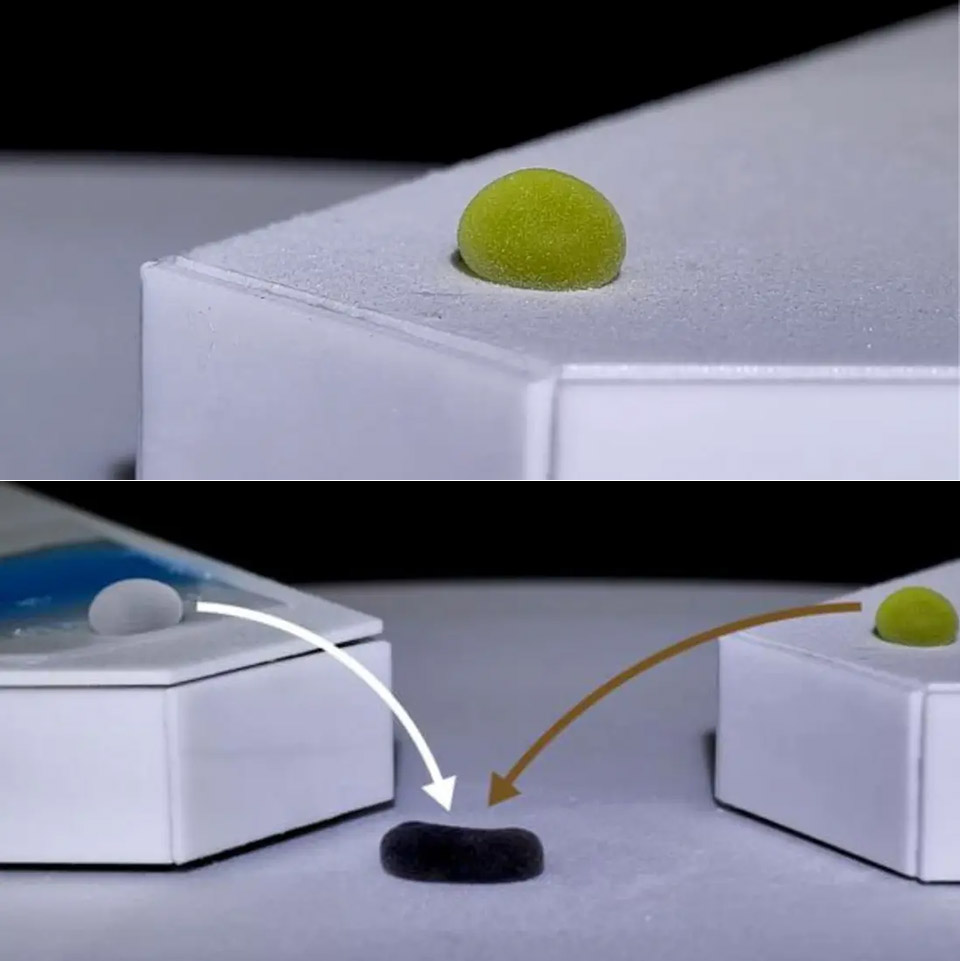
Photo credit: Jeon et al., Sci. Adv. 11, eadt5888 (2025)
A lab in Seoul had a major breakthrough with a project that produced a robot that resembles a gummy bear and behaves like a living cell. Just try dropping it from a table to see what happens – it splats and then just rolls away like it never happened. Squeeze it between your fingers and it oozes like jelly, only to snap back to its original shape when you let go. Play a burst of sound at it by sending two of them towards each other and they basically kiss, fuse and transform into one bigger blob – complete with whatever each one swallowed along the way.
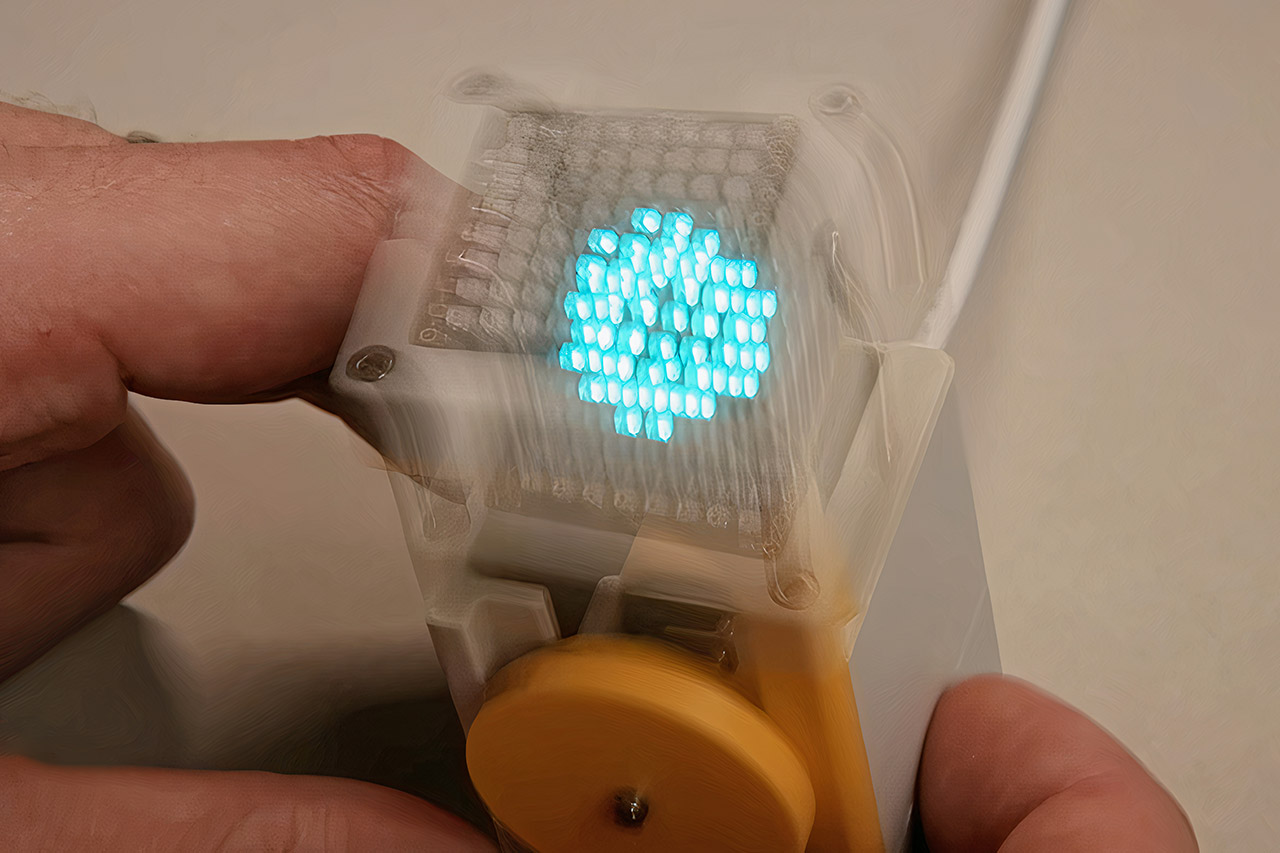
Matthew Lim decided to experiment with an ESP32 board that sports a tiny 8×8 LED matrix, capable of flickering through a digital recreation of fluid that looked eerily similar to moving water. He found it fascinating, and an idea sprang to mind: try if he could fit a few pieces of hobbyist gear into a pocket-sized 3D window.
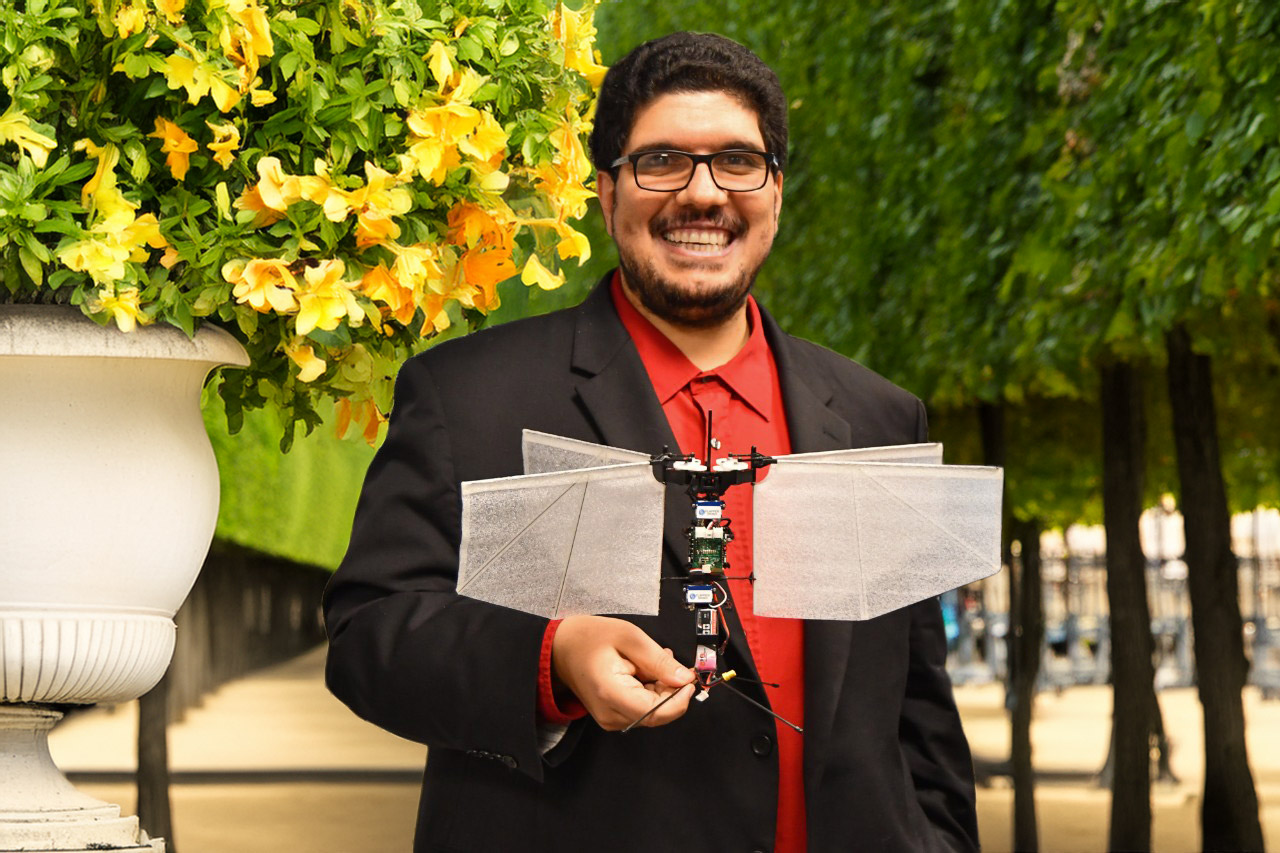
Photo credit: Michael Miller
At the University of Cincinnati, a small lab is humming with the faint whir of tiny fabric wings cutting through the air. Inside, a coffee cup-sized drone, called Flapper, takes to the air, its four tiny legs a whirlwind. There are no big rotating fans chomping through the battery or onboard computer frantically crunching numbers – it’s just a basic computer that flies. Researchers have spent years monitoring moths darting through gusts and floating in mid-air, and their findings will help revolutionize the way we construct anything that can fly.

A high-speed, color camera able to capture 16,000 frames per second has snapped a vivid glimpse of nuclear fusion inside Tokamak Energy’s ST40 – a spherical tokamak. The footage shown by the UK based startup, lets you see a glowing pink edge of deuterium plasma, along with streaks of greenish/yellow lithium ions careening through a magnetic cage.
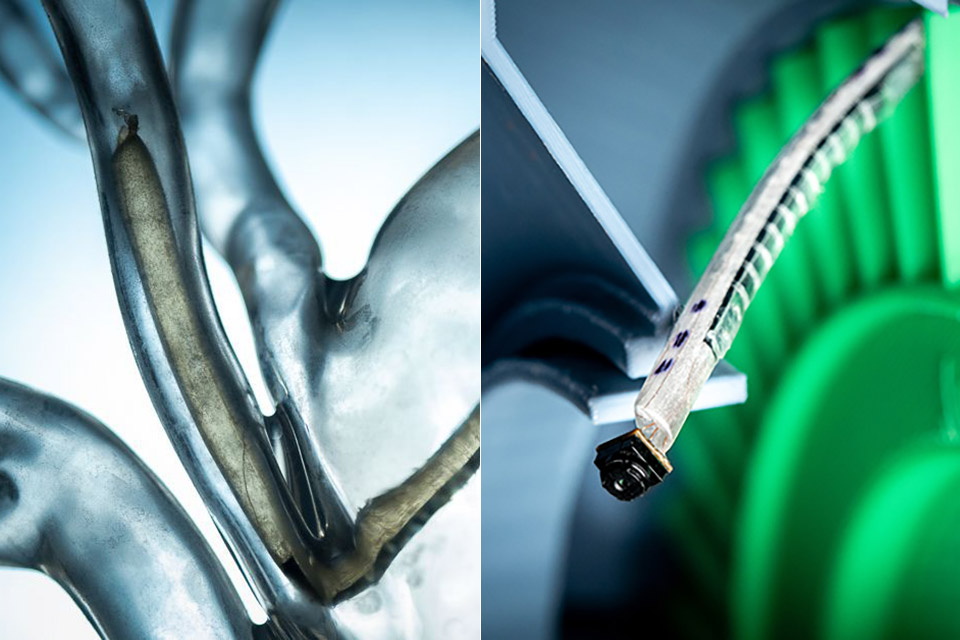
Photo credit: David Baillot/UC San Diego Jacobs School of Engineering
Engineers at the University of California, San Diego have managed to create a thin layer of material that turns your run of the mill soft robots into agile explorers. These vine robots can stretch and twist through spaces that would be way too small and fiddly for bigger machines, just like a snake slithering through grass.

Bismuth crystals have an otherworldly beauty, shimmering with iridescent colours that seem to dance across their stair-step surfaces when light hits them. Mistaking them for some kind of high-tech creation is easy, but they’re actually 100% natural. Their unique geometry – a real maze of spiraling edges and colors – has people wondering: what is it about these crystals, made from molten metal as they are, that gives them their otherworldly looks?

Water is everywhere, but this simple molecule, two hydrogens clinging to an oxygen, still surprises scientists. A team from the Korea Research Institute of Standards and Science (KRISS) and the European XFEL in Germany have found a new form of ice, called ice XXI, that forms at room temperature under extreme pressure.

